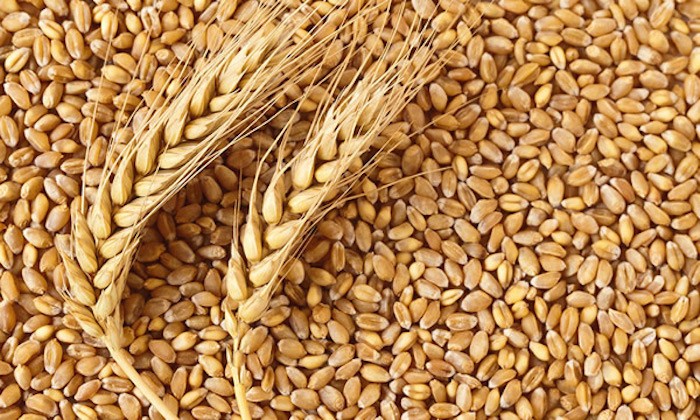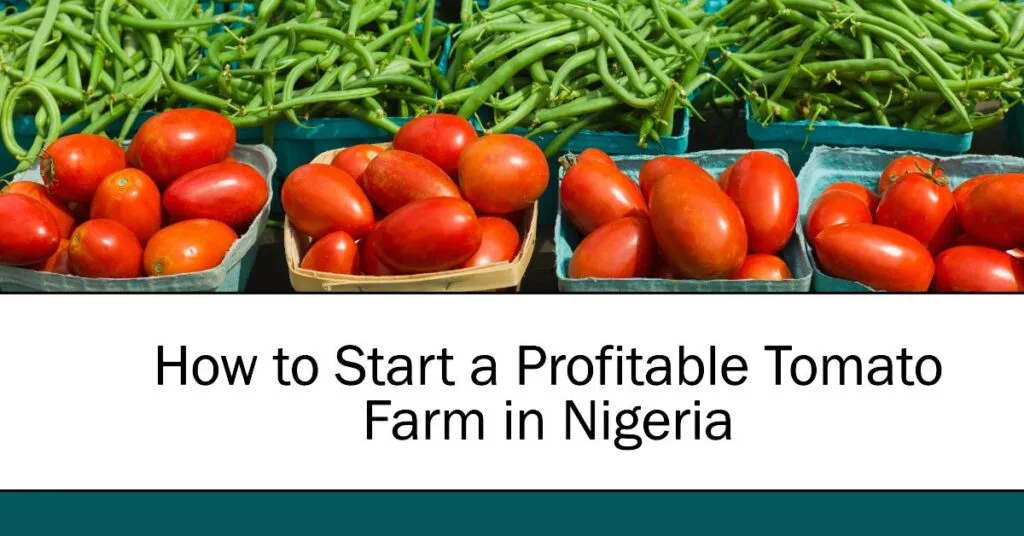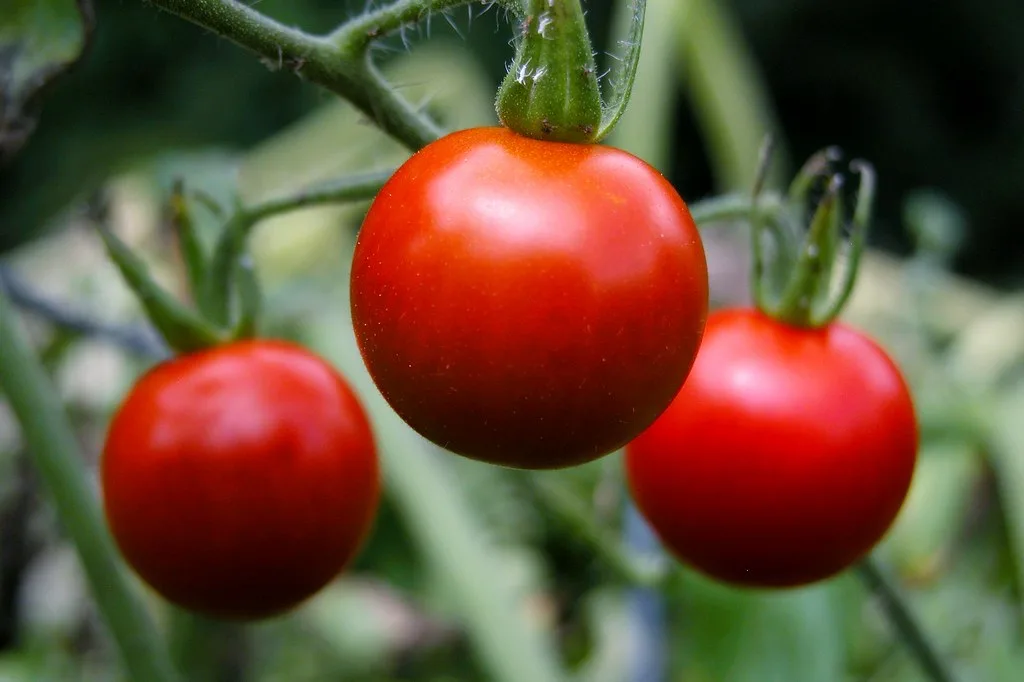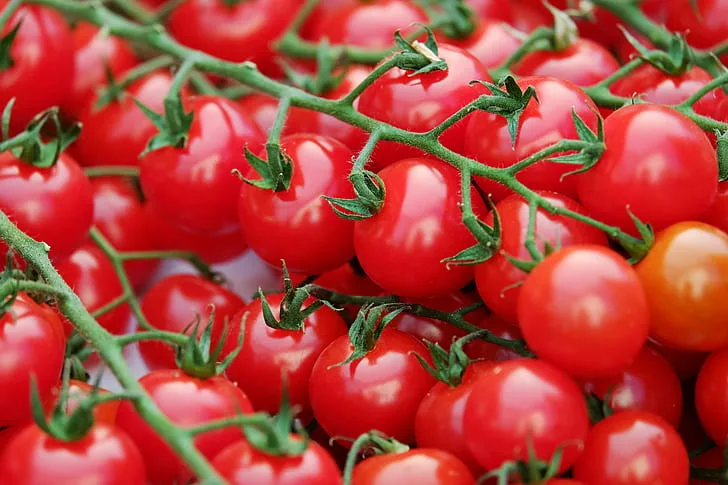Growing wheat in Nigeria is an incredible opportunity for farmers, especially since the demand for wheat-based products like bread, pasta, and noodles is skyrocketing. Did you know Nigeria spends billions of Naira on wheat imports each year? That’s money leaving the economy—and you can help change that while boosting your income!
Wheat farming is not just profitable; it’s also rewarding. Imagine being part of a movement that transforms Nigeria’s agricultural landscape! Whether you’re a seasoned farmer or new to the game, this guide will walk you through planting wheat in Nigeria—from picking the right seeds to reaping a bountiful harvest.
Stick with me, and I’ll share everything you need to know to turn your land into a productive wheat farm. Let’s make every grain count!
Understanding Wheat Farming in Nigeria
Wheat farming is gaining traction in Nigeria, but there’s still a lot of untapped potential. The country’s climate traditionally posed challenges for wheat production, as the crop prefers cooler weather. But recent advancements in agricultural research have introduced tropical wheat varieties that thrive in parts of the country, particularly in the north.
Why Should You Farm Wheat?
- High Demand: Bakeries, mills, and consumers depend heavily on wheat, making it a high-demand crop year-round.
- Reduced Import Dependency: Nigeria imports over 95% of its wheat. Local production can fill this gap.
- Profitability: With a high market price and various value-added options, wheat farming can be a game-changer for your farm.
Ideal wheat farming regions include Kano, Borno, Sokoto, Bauchi, and parts of Plateau State. If you’re outside these areas, don’t worry. With the right irrigation, fertilizer, and seeds, wheat can grow in many parts of Nigeria.
What Are the Climatic and Soil Requirements for Wheat Farming?
Growing wheat successfully starts with understanding the environment it thrives in. Luckily, many parts of Nigeria have just what this crop needs!
Ideal Climate for Wheat
Wheat prefers cooler temperatures, especially during its early growth stages. In Nigeria, the best time to plant is during the dry season, typically between November and January. The crop grows well when temperatures range from 10°C to 25°C.
Rainfall and Water Needs
While wheat isn’t a water-heavy crop, it still needs regular moisture — around 300 to 500 mm of rainfall during its growth cycle. In areas with lower rainfall, farmers use irrigation systems to make up the difference.
Best Soil for Wheat
Wheat grows best in:
- Loamy or sandy loam soils with good drainage.
- Soils with a pH between 6.0 and 7.5.
- Fertile lands rich in organic matter.
In Nigeria, regions with fertile floodplains, like those near the Niger and Sokoto rivers, provide excellent soil conditions for wheat farming.
Where Are the Major Wheat-Producing Regions in Nigeria?
Wheat is primarily grown in the northern part of Nigeria, where the climate and soil conditions are most suitable. Let’s break down the key regions and what makes them prime for wheat farming!
- Kano State: Known for its large-scale irrigation projects, Kano is a wheat powerhouse. The Kadawa Valley Irrigation Scheme allows farmers to cultivate wheat during the dry season, significantly boosting yields.
- Borno State: With vast fertile lands and access to the Chad Basin Irrigation Project, farmers in Borno can grow wheat with relatively stable water access, despite the region’s arid conditions.
- Kebbi State: Home to the Zauro polder project, which supports large-scale wheat farming through controlled flooding. The state’s participation in the Anchor Borrowers’ Program has further encouraged wheat production by providing farmers with affordable inputs and financing.
- Yobe State: Yobe’s expansive plains and supportive government policies make it a critical wheat-producing region. The Nguru Wetlands offer natural irrigation opportunities, reducing the reliance on artificial systems.
- Jigawa State: Gaining recognition for its wheat production, Jigawa benefits from programs like the Wheat Value Chain Initiative, which trains farmers on best practices and provides high-quality seed varieties.
These states collectively contribute the bulk of Nigeria’s wheat production, but the potential for growth is still enormous. With improved infrastructure, better seed varieties, and increased investment, more states could become significant wheat producers in the future.
Choosing the Right Variety of Wheat
The first and most important step is picking the right seed. Not all wheat varieties grow well in Nigeria, so you should choose tropicalized and hybrid varieties developed for our climate.
Recommended Varieties in Nigeria:
- Tropicalized Varieties: These have been specially bred to handle Nigeria’s higher temperatures.
- Hybrid Wheat Seeds: Known for producing higher yields and resisting pests and diseases.
When buying seeds, check with trusted agricultural agencies like the International Institute of Tropical Agriculture (IITA) or local extension offices. They can guide you toward certified, high-quality seeds that suit your soil and climate.
Land Preparation
The condition of your land can make or break your wheat farming efforts. Wheat grows best in well-drained, fertile loamy soils with a pH between 6.0 and 7.5.
Steps for Land Preparation:
- Clear the Field: Remove all weeds, rocks, and debris. A clean field reduces competition for nutrients and water.
- Plough the Soil: Use a tractor or manual tools to loosen the soil. This improves aeration and helps roots penetrate deeper.
- Harrow the Land: Break down clumps of soil to create a fine tilth suitable for planting.
- Enrich the Soil: Add organic matter like compost or animal manure. This provides essential nutrients and improves soil structure.
For best results, conduct a soil test before planting. This will reveal nutrient deficiencies and help you apply the right fertilizers. For example, sandy soils may require additional organic matter, while acidic soils might need lime to balance the pH.
Planting Wheat
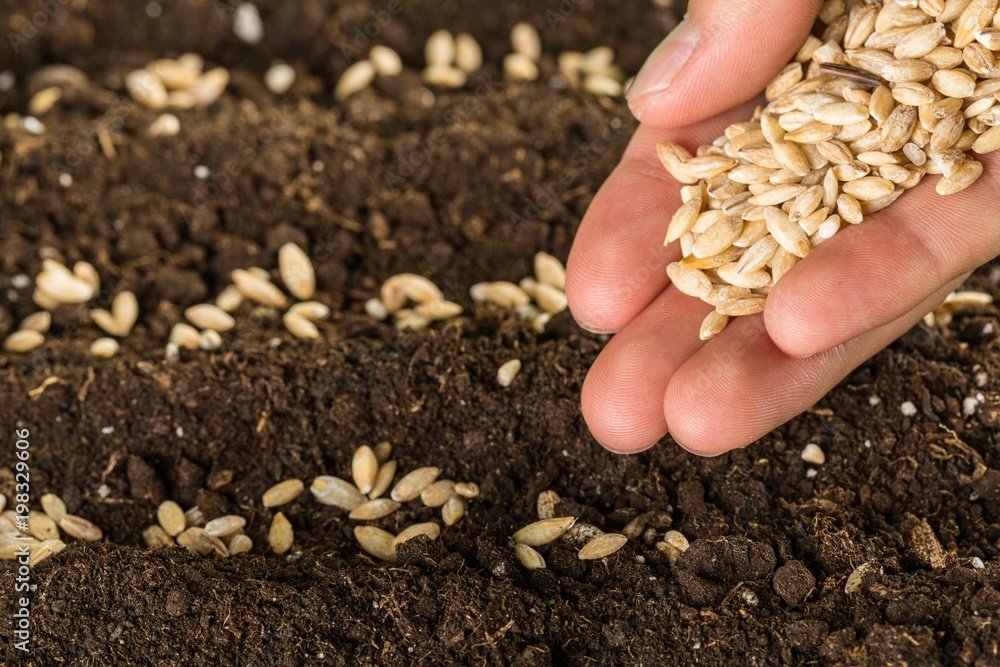
Timing and technique are critical when planting wheat. The best time to plant wheat in Nigeria is between November and December, during the dry season when temperatures are cooler.
How to Start and Manage a Wheat Farm
Starting and managing a successful wheat farm in Nigeria requires careful planning and step-by-step execution. Let’s break it down into actionable stages to make the process as straightforward as possible.
Step 1: Land Preparation
- Clear the land: Remove weeds, shrubs, and debris to give wheat plants a clean space to grow.
- Plow the soil: Use a tractor or manual plow to loosen the soil, helping roots penetrate easily.
- Harrow and level the field: Harrowing breaks up soil clumps, while leveling prevents waterlogging and ensures even water distribution during irrigation.
Step 2: Seed Selection
Choosing high-quality, disease-resistant seeds is crucial for success. Varieties like HB4 wheat, a drought-tolerant genetically modified strain, have been introduced to help farmers cope with Nigeria’s unpredictable weather (Source: ISAAA).
- Select high-quality, disease-resistant varieties: Options like HB4 wheat (drought-tolerant) or Norman wheat (rust-resistant) perform well in Nigeria’s climate.
- Source seeds from trusted suppliers: Purchase certified seeds from research institutions or agricultural agencies to guarantee quality.
Step 3: Planting Techniques
- Timing: Plant between November and January for optimal growth during the dry season.
- Spacing: Sow seeds 20–25 cm apart in rows, planting them 3–5 cm deep.
- Seeding rate: Use 100–120 kg of seeds per hectare for balanced plant density.
Step 4: Irrigation Practices
Since wheat grows during Nigeria’s dry season, irrigation is often essential:
- Furrow irrigation: Directs water through small channels between rows.
- Sprinkler systems: Mimic rainfall and distribute water evenly.
- Irrigation frequency: Water the crops every 7–10 days, adjusting based on soil moisture levels.
Step 5: Fertilization and Soil Management
Healthy soil means healthy crops!
- Pre-planting fertilizer: Apply a balanced fertilizer (e.g., NPK 15-15-15) during land preparation.
- Top-dressing: Add urea or ammonium nitrate when plants are about 4–6 weeks old to boost growth.
- Soil testing: Regularly test soil to monitor nutrient levels and adjust fertilizer use accordingly.
Step 6: Pest and Disease Management
Protecting your wheat from pests and diseases is vital for high yields:
- Preventative measures: Rotate crops, clear debris, and space plants properly to improve airflow.
- Pesticides and fungicides: Use approved treatments for threats like stem rust and aphids.
- Early detection: Regularly inspect plants for signs of disease or pest damage, acting quickly if issues arise.
Step 7: Harvesting and Post-Harvest Handling
The final step is bringing in your hard-earned crop:
- Harvesting time: Wheat is ready when grains turn golden and hard. Use mechanical harvesters or cut stalks by hand.
- Drying: Dry grains to a 12% moisture level to prevent spoilage.
- Storage: Store wheat in airtight containers or silos to protect it from pests and humidity.
- Processing: Sell grains directly to mills or process them into flour for added value.
By carefully following these steps, you can build a thriving wheat farm that withstands challenges and maximizes profits.
Care and Maintenance
Caring for your wheat crop is an ongoing process. Proper care ensures healthy growth and maximum yields.
Key Care Practices:
- Watering: Wheat needs water during germination, tillering (when shoots develop), and grain filling. Too much water, however, can cause waterlogging and reduce yields.
- Weeding: Weeds compete with your wheat for nutrients, water, and sunlight. Use herbicides or manual weeding every few weeks to keep them under control.
- Fertilization: Apply nitrogen-rich fertilizers like urea during planting and mid-growth stages. Phosphorus and potassium fertilizers also improve root development and grain quality.
- Pest and Disease Control: Common threats include aphids, armyworms, and fungal diseases like rust. Inspect your crops regularly and use approved pesticides or fungicides only when necessary.
Keep a close eye on your wheat throughout its growth cycle. Spotting problems early can prevent major losses.
Harvesting and Storage
After months of hard work, the harvest is finally here! Wheat is ready for harvest when the stalks turn golden yellow, and the grains are hard and dry. This typically occurs about 4–5 months after planting.
Steps for Harvesting:
- Cutting: Use a sickle, scythe, or combine harvester, depending on your farm size and resources.
- Threshing: Separate the grains from the stalks using a thresher or manual methods.
- Drying: Dry the grains in the sun or with a dryer to reduce moisture content to below 12%.
Storage Tips:
- Store grains in clean, airtight silos or sacks.
- Use fumigation to prevent pests like weevils.
- Ensure the storage area is cool and dry to avoid mold growth.
Proper harvesting and storage not only preserve the quality of your wheat but also boost your market value.
Soil Fertility Management
Managing soil fertility is a critical aspect of successful wheat farming in Nigeria. Without proper nutrient balance, wheat plants struggle to reach their full potential, resulting in lower yields and poor-quality grains. Let’s break it down step by step so you can optimize your soil and maximize productivity!
Step 1: Test Your Soil
Before applying fertilizers, it’s essential to know what nutrients your soil already has — and what it lacks. You can do this by sending a soil sample to a local agricultural extension office or research institute like the Lake Chad Research Institute (LCRI).
- Key nutrients to check: Nitrogen (N), Phosphorus (P), Potassium (K), Sulfur (S), Magnesium (Mg), Zinc (Zn), Boron (B), and Molybdenum (Mo).
- Ideal pH range: 6.0–7.5 (Wheat struggles when soil pH drops below 5.5, leading to nutrient deficiencies like reduced phosphorus and calcium uptake (ICL-Growing Solutions)).
Step 2: Prepare the Soil
Once you’ve tested the soil, it’s time to prepare it for planting.
- Plowing and harrowing: Helps aerate the soil and break up compacted areas.
- Leveling: Prevents waterlogging and ensures even water distribution during irrigation.
- Incorporate organic matter: Add compost or manure to improve soil structure and boost microbial activity.
Step 3: Fertilization Strategies
For high yields, wheat needs a balanced diet! Here’s a general fertilization guide tailored for Nigerian conditions:
- Basal application (before planting): 300–500 kg/ha of a compound fertilizer (e.g., 7-14-7 NPK).
- Top dressing (at tillering stage): 350–500 kg/ha of Urea or Ammonium Nitrate.
- Balanced nutrient application: Research shows that applying 100 kg of nitrogen per hectare — slightly less than the traditional recommendation of 120 kg — combined with nutrients like magnesium (Mg), sulfur (S), zinc (Zn), boron (B), and molybdenum (Mo), can increase yields and enhance profitability (AJOL).
- Emerging strategies: Using innovative fertilizers like Polysulphate (polyhalite), which naturally provides sulfur, potassium, magnesium, and calcium, has been shown to boost yield, improve grain protein quality, and enhance nitrogen use efficiency (ICL-Growing Solutions).
Using a split application (applying fertilizer in smaller doses) helps prevent nutrient loss and ensures a steady supply of nutrients throughout the crop cycle.
Step 4: Crop Rotation and Cover Crops
Rotating wheat with legumes like cowpeas or groundnuts helps replenish nitrogen naturally. Planting cover crops during the off-season also prevents soil erosion and boosts organic matter.
Step 5: Monitor and Adjust
Throughout the growing season, keep an eye on your plants. Yellowing leaves? Might be a nitrogen deficiency. Stunted growth? Could be a phosphorus shortage.
- Regular leaf tissue analysis can help catch deficiencies early.
- Precision farming tools (like soil moisture sensors) can optimize fertilizer and water use.
By actively managing soil fertility, you can increase yields, improve grain quality, and make your wheat farm more sustainable.
Wheat Farming as a Business
Wheat farming isn’t just an agricultural activity—it’s a lucrative business. The key to success lies in planning and marketing.
Business Tips:
- Sell Directly: Partner with local bakeries, flour mills, and wholesalers to sell your wheat.
- Value Addition: Turn your wheat into flour or other processed goods to increase profitability.
- Explore Export Markets: With the right certifications, you can sell Nigerian wheat internationally.
Monitor market prices and government programs that support wheat farmers. Programs like the Anchor Borrowers’ Scheme often offer farmers loans, inputs, and guaranteed markets.
Step-by-Step Financial Plan
Getting your wheat farming business off the ground requires smart financial planning. Here’s a detailed breakdown to guide you:
1. Budgeting – Cost of wheat farming in Nigeria
Estimate your costs and potential income before planting. Here’s an example budget for one hectare of wheat:
- Land Preparation: ₦50,000
- Seeds (50 kg): ₦25,000
- Fertilizers (NPK and Urea): ₦40,000
- Labour: ₦60,000
- Irrigation (Drip system setup): ₦100,000
- Pest and Weed Control: ₦30,000
- Harvesting and Storage: ₦50,000
Total: ₦355,000
2. Securing Funds
- Apply for government grants or subsidies through schemes like the Anchor Borrowers’ Program (ABP).
- Explore loans from microfinance banks or cooperative societies.
- Consider pooling resources with fellow farmers in a cooperative.
3. Cost-Saving Tips
- Buy inputs in bulk to get discounts.
- Use organic fertilizers like animal manure to reduce reliance on chemical inputs.
- Rent farming equipment instead of buying outright.
4. Projected Revenue
With proper management, wheat farming can yield 2.5–3.5 tons per hectare. At an average market price of ₦160,000 per ton, you could earn up to ₦560,000 per hectare. Subtracting costs, your profit could be around ₦200,000–₦300,000 per hectare.
How Profitable is Wheat Farming in Nigeria?
Wheat farming in Nigeria holds significant potential for profitability, especially given the growing demand for wheat-based products such as bread, pasta, and noodles. However, current wheat production barely meets local demand, leading to a heavy reliance on wheat imports. This creates a lucrative opportunity for farmers to fill the gap in the market.
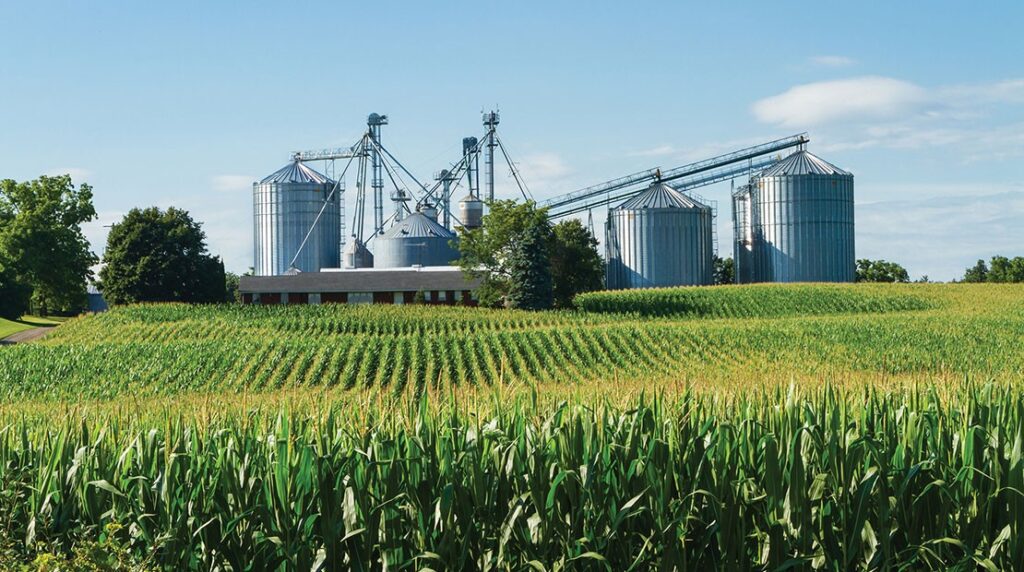
The profitability of wheat farming, however, depends on several factors including the cost of inputs (seeds, fertilizers, pesticides, and labour), the yield per hectare, and the price at which the wheat is sold. On average, a well-managed wheat farm can yield between 2-4 tons per hectare, with an average price per ton fluctuating based on market conditions.
Additionally, if you have access to modern farming technologies and good market connections, your chances of maximizing profitability increase. Successful farmers have reported making significant profits, especially when they receive adequate support through government policies, subsidies, and the use of high-yielding seed varieties.
How Much is 1kg of Wheat in Nigeria?
The price of wheat in Nigeria fluctuates depending on supply and demand, seasonal factors, and the market location. On average, the price of wheat per kilogram can range from ₦400 to ₦500. However, this price may vary across regions, with prices tending to be higher in rural areas where the supply chain is less developed.
It’s important to keep an eye on the market trends and establish strong connections with local traders or millers to secure better prices for your wheat.
Which is Best for Wheat Farming?
To achieve the best results in wheat farming, several factors come into play, including the choice of wheat variety, soil quality, climate, and farming practices. Here are a few considerations for ensuring the success of wheat farming:
- Best Wheat Varieties: For Nigerian conditions, drought-resistant wheat varieties such as Kudrat 20, NARITA 1, and Oba 98 have shown great potential.
- Good Quality Soil: Wheat thrives in well-drained, loamy soil with a pH level of 6.0 to 7.0. Preparing the soil properly before planting is crucial.
- Modern Farming Techniques: Adopting practices such as the use of organic fertilizers, crop rotation, and pest management will contribute to higher yields.
- Irrigation: While wheat is a dry-season crop, a good irrigation system can ensure consistent moisture, particularly during the dry months when rainfall is inadequate.
By paying attention to these factors, you can maximize the chances of a successful and profitable wheat farming venture in Nigeria.
Where Can Wheat Grow in Nigeria?
Wheat farming in Nigeria is best suited to the Northern region due to its temperate climate. The primary wheat-growing states are Kano, Jigawa, Kaduna, Bauchi, Katsina, and Sokoto. These areas experience cooler temperatures, particularly during the dry season, which are conducive to wheat production. Wheat requires temperatures between 18°C and 22°C, and these states provide the ideal environment for growing the crop.
However, with advancements in agricultural techniques and the introduction of drought-resistant wheat varieties, wheat farming has slowly begun to spread to other regions, although the Northern states remain the most productive.
Which Month to Plant Wheat in Nigeria?
The ideal planting period for wheat in Nigeria is between November and December. The weather is cooler during this time, which aligns well with the crop’s temperature needs. Planting wheat during this period allows the crop to grow in the cooler dry season and reach maturity before the onset of the rainy season.
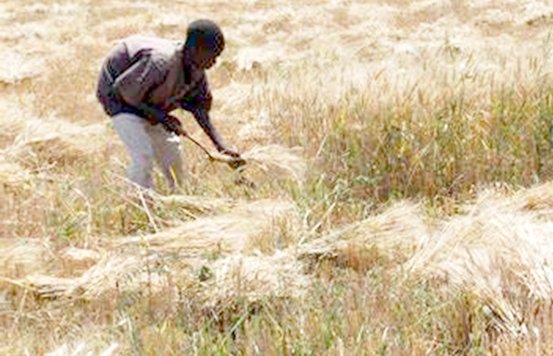
For farmers in the northern region, where temperatures are relatively higher, planting in November ensures that the wheat plants can benefit from the cooler months and have a better chance of thriving. Wheat crops generally take 4 to 5 months to mature.
What is the Yield per Hectare of Wheat in Nigeria?
The average yield per hectare of wheat in Nigeria varies depending on several factors such as soil fertility, farming practices, and the variety of wheat used. On a typical farm, wheat yields can range from 2 to 4 tons per hectare. However, with improved farming practices, the yield can be increased significantly.
Farmers who adopt modern farming techniques such as irrigation, proper seed treatment, pest control, and high-yielding wheat varieties can achieve yields of up to 5 tons per hectare. The yield per hectare also depends on the quality of inputs like fertilizers and pesticides, and how well the field is managed throughout the growing season.
Is Wheat in High Demand?
Yes, wheat is in high demand, both globally and within Nigeria. In Nigeria, the demand for wheat has been growing steadily due to its wide use in the production of food products like bread, pasta, noodles, cakes, and biscuits. The rise in urbanization and a growing population have also contributed to an increase in wheat consumption. Despite the country’s vast potential for wheat production, Nigeria still imports a significant amount of wheat to meet domestic needs, which makes it an even more attractive market for local farmers and entrepreneurs.
What is the Demand for Wheat in Nigeria?
The demand for wheat in Nigeria is substantial and continues to grow. The country is one of the largest wheat importers in Africa, with about 5 to 6 million metric tons of wheat being imported annually to meet the consumption needs of the population. However, this high level of importation presents a unique opportunity for local wheat farmers to fill the gap and reduce their dependency on imports. The increasing demand for wheat flour-based products, particularly in the baking industry, is one of the primary drivers of this demand.
How Lucrative is the Grain Business in Nigeria?
The grain business, including wheat, is quite lucrative in Nigeria. Nigeria is home to several staple grains, such as maize, rice, sorghum, and wheat, all of which have strong demand in both the domestic and international markets. The wheat business, in particular, offers immense opportunities because of the gap between domestic production and consumption.
For wheat farmers, profits come from the direct sale of wheat to millers or traders, and from adding value through the production of flour and other wheat-based products. The government has been offering subsidies and support for local wheat production, creating a favourable environment for grain businesses. However, success in the grain business depends on factors like market access, proper storage facilities, and the ability to scale production. The grain business, when done right, can be highly profitable and sustainable.
Can wheat grow in southern Nigeria?
Wheat farming is generally more suited to the northern parts of Nigeria, where the climate and soil conditions are more favourable for wheat production. However, wheat can grow in southern Nigeria with the right adjustments and interventions.
Southern Nigeria has a more tropical climate, with high humidity and heavy rainfall, which can present challenges for wheat farming. Wheat requires a cool, dry climate to thrive, particularly during the flowering and grain-filling stages. The longer rainy season and higher temperatures in the south can lead to challenges like fungal infections, pests, and poor seed germination.
That said, there have been efforts to develop wheat varieties that can withstand the humid and wet conditions of the southern regions. With the right inputs like irrigation, improved seed varieties, and soil management practices, wheat farming can be experimented with in the southern states.
In addition, Nigeria’s agricultural research institutions have been working on developing wheat strains that are more adaptable to different climatic zones. While it’s not the most common practice, wheat farming in southern Nigeria is possible, but it requires careful planning, the right technology, and resources to succeed.
What Are the Problems with Wheat Production in Nigeria?
Wheat production in Nigeria faces several challenges, which hinder its full potential. Some of the key problems include:
- Inadequate Financing: Most farmers struggle to access loans and financial support, making it difficult for them to purchase quality seeds, fertilizers, and machinery.
- Poor Irrigation Systems: While wheat requires consistent water, many areas lack reliable irrigation infrastructure, leading to water scarcity during the dry season.
- Low-Quality Seeds: The use of substandard or outdated wheat seeds significantly affects yield. There is a need for improved seed varieties suited for Nigerian soil and weather conditions.
- Pests and Diseases: Wheat is susceptible to pests like aphids and fungal infections, which can significantly reduce yield if not controlled.
- Climate Change: Unpredictable weather patterns, such as irregular rainfall and rising temperatures, have made it more challenging to grow wheat in certain areas.
- Limited Extension Services: The lack of sufficient agricultural extension services to educate farmers on best practices further limits the potential for improving wheat yields.
Common Challenges in Wheat Farming
While wheat farming offers lucrative rewards, it’s not without its fair share of obstacles. Here’s a breakdown of the most common challenges and practical ways to tackle them:
1. Climatic Conditions
Wheat thrives in temperate regions, and Nigeria’s warm climate can sometimes pose difficulties, especially during flowering and grain formation stages.
Solution:
Plant wheat during the cooler months (November–December) and choose heat-resistant varieties like Norman Borlaug types. Implement mulching to reduce soil temperature and conserve moisture.
2. Pests and Diseases
Pests like aphids and diseases such as rust and smut can wreak havoc on wheat crops.
Solution:
Use certified seeds resistant to pests and diseases. Regularly inspect your farm and apply organic or chemical pesticides as necessary. Neem oil is an eco-friendly option for pest control.
3. High Input Costs
The costs of fertilizers, seeds, irrigation, and labour can be a burden, especially for small-scale farmers.
Solution:
Take advantage of government subsidies, form cooperatives to share costs, or seek agricultural loans from microfinance banks.
4. Poor Market Access
Selling wheat at a fair price can be a struggle if you lack the right connections.
Solution:
Build partnerships with buyers like flour mills and food processors early in the planting season. Leverage digital platforms to connect with wholesale buyers.
5. Water Scarcity
Wheat needs consistent watering, but some regions face water supply challenges.
Solution:
Invest in drip or sprinkler irrigation systems that maximize water efficiency. Collect rainwater in storage tanks during the rainy season for later use.
Modern Technologies in Wheat Farming
The farming world is evolving, and technology is making wheat farming more efficient and profitable. Let’s explore some modern techniques to take your farm to the next level:
1. Precision Agriculture
Using GPS technology, drones, and sensors, farmers can monitor soil health, moisture levels, and crop growth in real-time.
Benefits:
- Minimizes resource wastage.
- Detects problems like nutrient deficiencies early.
2. Improved Seed Varieties
Research institutes are developing high-yield, pest-resistant, and drought-tolerant wheat varieties specifically for African climates.
Examples:
- LACRI WHIT (local)
- CIMMYT varieties
3. Automated Irrigation Systems
Modern irrigation systems like drip and sprinkler irrigation ensure water is delivered directly to the plant roots, saving water and time.
Pro Tip:
Automate your irrigation system to schedule watering during cooler parts of the day to reduce evaporation losses.
4. Farm Management Apps
Mobile apps help farmers track planting schedules, monitor weather conditions, and record expenses. Popular options include AgriKore and Hello Tractor.
5. Post-Harvest Technologies
Machines like combine harvesters and threshers speed up harvesting and reduce post-harvest losses. Grain silos equipped with temperature controls ensure wheat stays fresh during storage.
Government Support and Policies
The Nigerian government recognizes the importance of boosting wheat production and has implemented programs to support farmers:
1. Anchor Borrowers’ Program (ABP)
This initiative by the Central Bank of Nigeria (CBN) provides farmers with loans for seeds, fertilizers, and equipment. Repayment is done after harvest in cash or kind.
2. Research and Development
Organizations like the Lake Chad Research Institute (LCRI) focus on developing wheat varieties tailored to Nigeria’s climate and soil conditions.
3. Input Subsidies
Farmers can access subsidized fertilizers, seeds, and irrigation equipment through state agricultural programs.
4. Extension Services
Government agricultural extension officers provide training on best practices in wheat farming, pest control, and post-harvest management.
5. Export Incentives
The government offers incentives for wheat farmers and processors looking to export their produce, such as reduced tariffs and tax holidays.
How Is the Government Supporting Wheat Farmers?
The Nigerian government and various organizations are working to boost wheat production:
- Subsidies: Farmers get discounted fertilizers, seeds, and farming equipment through programs like the Anchor Borrowers’ Program (CBN).
- Training programs: Workshops and agricultural extension services teach farmers best practices. You can find valuable resources through the Federal Ministry of Agriculture and Rural Development (FMARD).
- Research initiatives: Institutes like the Lake Chad Research Institute (LCRI) develop improved wheat varieties suited to local conditions. Farmers can explore research findings and seed varieties directly on the LCRI website (LCRI).
These resources provide practical help and up-to-date information, making it easier for farmers to navigate challenges and boost their yields.
Economic Potential of Wheat Farming in Nigeria
Wheat farming holds significant economic promise for Nigeria, offering opportunities to enhance food security, reduce import dependence, and stimulate rural development.
Current Consumption and Production Landscape
Nigeria’s wheat consumption has been substantial, with recent figures indicating a demand of approximately 4.5 million metric tons (MMT) in the 2023/24 marketing year. However, domestic production remains minimal, with estimates around 60,000 metric tons, accounting for a mere 1% of national consumption (republic.com.ng). This disparity necessitates significant imports to bridge the gap.
Import Dependency and Economic Implications
The heavy reliance on wheat imports has considerable economic implications. In 2023, Nigeria imported wheat worth approximately $2.97 billion, making it the sixth-largest wheat importer globally (oec.world).
This substantial outflow of foreign exchange exerts pressure on the nation’s balance of payments and exposes the economy to global market volatilities.
Opportunities for Economic Growth
Enhancing domestic wheat production presents several economic benefits:
- Foreign Exchange Conservation: Reducing imports can help conserve foreign reserves, strengthening the national currency and economic stability.
- Employment Generation: Expanding wheat farming can create jobs in agriculture and related sectors, fostering rural development and reducing unemployment.
- Value Chain Development: A robust wheat industry can stimulate growth in processing industries, such as flour milling and food production, adding value locally and increasing GDP.
Strategic Considerations
To unlock the economic potential of wheat farming, strategic interventions are essential:
- Investment in Research and Development: Developing high-yield, climate-resilient wheat varieties suited to Nigeria’s agro-ecological zones can boost productivity.
- Infrastructure Development: Improving irrigation, storage, and transportation infrastructure can enhance production efficiency and market access.
- Policy Support: Implementing favorable policies, including subsidies and training programs, can encourage farmers to adopt wheat cultivation.
By addressing these areas, Nigeria can harness the economic potential of wheat farming, promoting self-sufficiency and sustainable economic growth.
Success Stories
Wheat farming in Nigeria has witnessed remarkable successes, showcasing the potential of strategic initiatives and technological innovations in transforming agriculture. Here are some notable examples:
Kano River Project
The Kano River Project (KRP) is a large-scale irrigation initiative in Northern Nigeria, developed under the Hadejia-Juma’are River Basin Development Authority. Initiated in 1971, the project aimed to enhance agricultural productivity through modern irrigation techniques. Over the years, KRP has facilitated the cultivation of various crops, including wheat, rice, and vegetables, significantly boosting local economies and improving food security in the region. The project’s success underscores the importance of infrastructure development in achieving agricultural sustainability (en.wikipedia.org).
Farmcrowdy’s Digital Agricultural Platform
Farmcrowdy, founded in 2016 by Onyeka Akumah and his co-founders, is Nigeria’s pioneering digital agriculture platform. It connects small-scale farmers with investors, providing them with the necessary resources to enhance productivity. Since its inception, Farmcrowdy has empowered over 25,000 rural farmers across 16 Nigerian states, including Oyo, Kano, and Ogun. By leveraging technology, the platform has improved access to funding, quality inputs, and advisory services, leading to increased yields and profitability for farmers. This innovative approach has been recognized at national levels, with acknowledgments from government officials and institutions (en.wikipedia.org).
Sasakawa Africa Association’s Impact
In the mid-1980s, the Sasakawa Africa Association (SAA), co-founded by Nobel laureate Norman Borlaug, initiated programs to boost agricultural productivity in Africa, including Nigeria. By introducing high-yield crop varieties and improved farming practices, the SAA played a pivotal role in transforming subsistence farming into more productive and profitable ventures. These interventions have led to significant increases in crop yields, including wheat, thereby enhancing food security and farmers’ livelihoods (en.wikipedia.org).
These success stories highlight the transformative power of targeted interventions, technological innovation, and collaborative efforts in advancing wheat farming and agriculture in Nigeria.
Frequently Asked Questions (FAQs) About Wheat Farming in Nigeria
1. What is the best time to plant wheat in Nigeria?
Wheat is best planted during the cooler months of the dry season, typically between November and December. This timing allows the crop to avoid high temperatures during critical growth stages.
2. What type of soil is suitable for wheat farming?
Wheat thrives in well-drained loamy or clay-loam soils with a pH range of 6.0–7.5. The soil should be rich in organic matter and have good water retention capabilities.
3. How much does it cost to start wheat farming in Nigeria?
The cost varies depending on the scale of farming, but for one hectare, you’ll need around ₦300,000–₦400,000. This covers land preparation, seeds, fertilizers, labour, irrigation, and pest control.
4. How long does it take for wheat to grow?
Wheat typically takes 90–120 days to mature, depending on the variety and growing conditions.
5. What are the common pests and diseases affecting wheat crops?
Some common pests include aphids, armyworms, and wheat stem borers. Diseases like rust, smut, and mildew can also affect wheat crops. Proper farm management, regular inspection, and the use of resistant varieties can help mitigate these issues.
6. Can wheat farming be profitable in Nigeria?
Yes, wheat farming is highly profitable when managed well. With an average yield of 2.5–3.5 tons per hectare and market prices of ₦150,000–₦180,000 per ton, farmers can expect significant returns after deducting costs.
7. What modern technologies can improve wheat farming in Nigeria?
Precision farming tools like drones and GPS monitoring.
Improved seed varieties for heat and drought resistance.
Automated irrigation systems such as drip or sprinkler irrigation.
Mobile apps for farm management and weather tracking.
8. Are there government programs that support wheat farmers?
Yes, several programs are available, such as:
Research Support: Institutes like LCRI develop wheat varieties suited for Nigeria.
Anchor Borrowers’ Program (ABP): Provides loans for seeds and equipment.
Subsidies: Discounts on fertilizers, seeds, and irrigation tools.
9. How do I sell my wheat after harvesting?
You can sell your wheat to flour mills, food processors, local markets, or wholesale buyers. It’s also a good idea to explore digital platforms that connect farmers to buyers directly.
10. What’s the average yield of wheat per hectare in Nigeria?
With proper farming techniques, wheat yields range between 2.5–3.5 tons per hectare. Modern farming methods can push this higher under optimal conditions.
11. How do I control weeds in my wheat farm?
Manual weeding, herbicides, and crop rotation can effectively manage weeds. Applying pre-emergence herbicides before planting helps prevent early weed growth.
12. Is irrigation necessary for wheat farming?
Yes, irrigation is essential, especially during dry periods. Drip or sprinkler systems are recommended for efficient water use and optimal crop growth.
13. Can small-scale farmers succeed in wheat farming?
Absolutely! By starting small, using modern farming techniques, and leveraging government programs, small-scale farmers can achieve impressive results. Joining cooperatives can also reduce costs and improve access to resources.
14. Where can I sell my wheat after harvest?
Local millers, grain markets, and cooperatives offer market access. Organizations like FMAN also help connect farmers to buyers, ensuring fair prices and reliable demand.
What’s the Future of Wheat Farming in Nigeria?
The future looks bright for wheat farmers in Nigeria! With advancements in technology, better access to resources, and strong government support, local production is set to rise. Innovations like precision farming and drought-resistant wheat strains will help farmers overcome challenges and increase yields.
There’s even potential for Nigeria to become a wheat exporter in the coming years, reducing reliance on imports and strengthening the country’s economy.
Final Thoughts: Is Wheat Farming Worth It?
Absolutely! Wheat farming in Nigeria is more than just an agricultural venture — it’s a pathway to food security, financial stability, and national growth. Yes, there are challenges, but with the right knowledge, tools, and support, success is well within reach.
If you’re ready to get your hands dirty and start growing wheat, there’s no better time than now. And remember, you don’t have to do it alone. Reach out to local agricultural extension services, join farmer associations, and connect with experts who can guide you every step of the way. The resources are there — it’s all about tapping into them and building a thriving farm that feeds both your family and the nation.
Let’s cultivate a future where Nigerian wheat feeds the nation and beyond!
Helpful Resources for Wheat Farming in Nigeria
Whether you’re just starting or looking to improve your existing wheat farm, there are numerous resources available to help you succeed. Here are some key resources you should check out:
1. National Agricultural Extension and Research Liaison Services (NAERLS)
NAERLS offers comprehensive support for farmers, including access to research, training, and extension services. They also provide guidelines on best practices for wheat farming in Nigeria.
Website: www.naerls.gov.ng
2. Nigeria Wheat Farmers Association
This association brings together wheat farmers, providing a platform for networking, knowledge exchange, and access to government programs. They also advocate for wheat farmers’ rights and interests.
Website: www.nwf.org.ng
3. The Federal Ministry of Agriculture and Rural Development (FMARD)
FMARD offers a range of programs to support farmers, including financing and subsidies for agricultural projects. The ministry also provides resources on various crops, including wheat.
Website: www.fmard.gov.ng
4. International Institute of Tropical Agriculture (IITA)
IITA conducts cutting-edge research on wheat and other crops, developing improved varieties and techniques tailored to Nigerian farmers. Their website is a great source of up-to-date agricultural knowledge.
Website: www.iita.org
5. National Agricultural Seeds Council (NASC)
For those interested in acquiring high-quality wheat seeds, NASC ensures that only certified and improved seeds are sold to farmers. They also offer seed certification services.
Website: www.nasc.gov.ng
6. Agric-Insurance Schemes
To safeguard your farm investment, consider taking out agricultural insurance. The Nigerian Agricultural Insurance Corporation (NAIC) offers insurance policies specifically designed to protect wheat farmers from natural disasters and other risks.
Website: www.naic.gov.ng
7. Wageningen University & Research – Online Courses
Wageningen University offers various online courses on agricultural techniques, including wheat farming, plant breeding, and pest management. These courses are accessible to Nigerian farmers looking to expand their knowledge.
Website: www.wur.nl/en/Research-Results
